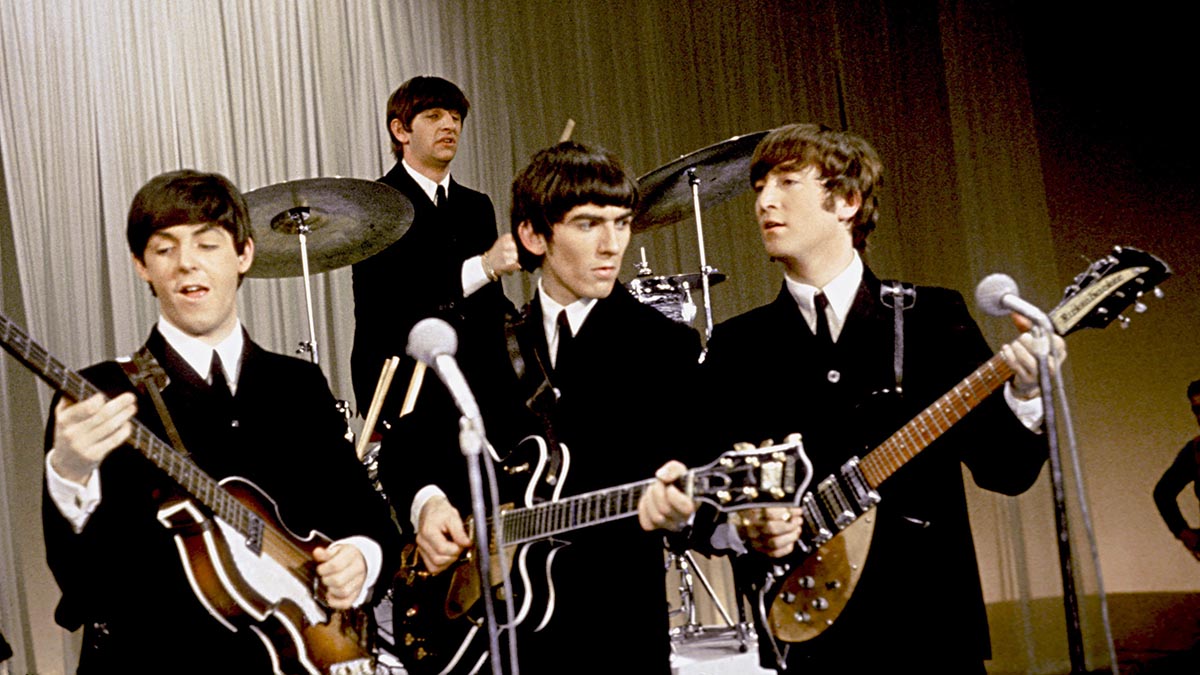Learn 10 of the Beatles' signature chord secrets
We delve into the wonderful world of Beatles harmony with a look at the trademark shapes and progressions of the Fab Four

All three guitarists in The Beatles were fine players, but their impressive individual musicianship and unrivalled writing prowess is often overshadowed by the sheer enormity of the group’s success.
Here, the aim of our lesson is to apply some of the tried and tested harmonic concepts used by John Lennon, Paul McCartney and George Harrison during their eight-year run at the top. That means we’re focusing on chords, progressions and songwriting methods.
With a catalogue so iconic and influential it’s fair to say that studying and learning some of the band’s nuts and bolts will benefit your overall musicianship. More importantly, much of what you’ll learn here was so influential that it’s been absorbed into the canon of rock music – so it applies to almost any style of music.
We’ve recorded 10 contrasting progressions to showcase some of the chords and changes that give the Beatles their trademark sound.
1. Melody in chord changes

This first Beatles-y example features a melodic trick called ‘voice leading’ that’ll lead your ear as the chords change. The A note in the opening chord descends a semitone with each change, going from A to G# then G when you reach the A7 chord. The run continues with an F# note in the Dmaj7 and an F in the Dm.
2. Dissonant sounds

These chords are dissonant in their nature, but they provide a great basis for a change to the mellower sounding Am9 root chord. Listen to I Want You (She’s So Heavy) to hear some similar sounds, including a variation on this E7b9 shape.
3. Barre chords

These generic barre chord types are at the core of many of the Fab Four’s rhythm parts. They’re standard shapes used everywhere from Hey Jude to Help. The closing chord evokes the opener from A Hard Day’s Night.
4. Rock ’n’ roll & dominant 7ths

Taking our inspiration from I Saw Her Standing There, you’ll see how bar 1 is a traditional rock ’n’ roll style riff (similar to Lennon’s part in ISHST) and the chords in bar 2 are akin to Harrison’s chords.
5. Beatles vs Hendrix

The 7#9 chord was of course a favourite of Jimi Hendrix, but Beatles classics like Taxman and Step Inside Love feature it too. The A7 and G7 chords can be played with a fretting-hand thumb for the bass notes.
6. Minor voice leading

Remember voice leading? Well, here is a minor version of the concept we looked at right at the start. This idea is well used in many songs by a huge variety of artists and is handy for providing interest when several bars of a minor chord are required.
7. Modal interchange

Modal interchange is a fancy name for changing chord types on one root note. Here the D major chord changes to D minor, which provides both a surprise and a cool tension. Another well-used alternative is a minor chord progression that finishes on a surprise major chord (e.g., Am-Dm-Em-A).
8. Major chord run (ascending)

Just as we created a descending melody in a major-chord run in Example 1, we can also create ascending movement. Here the augmented chord sounds most effective, it’s mild dissonance pulling you into the next chord change.
9. Chromatic chords

The use of chromatic chords is a great way to introduce fresh sounds into tried and tested chord progressions. Here C#m is followed by an unexpected and not-in-key C major chord.
10. Diminished chords

The diminished 7 (a favourite of George Harrison) is great for creating smooth transitions between chords a tone or semitone apart. Here the Ab moves to the Bb via Adim7 – that’s a semitone from Ab to A, then a tone from A to Bb.
Get The Pick Newsletter
All the latest guitar news, interviews, lessons, reviews, deals and more, direct to your inbox!
Total Guitar is one of Europe's biggest guitar magazines. With lessons to suit players of all levels, TG's world-class tuition is friendly, accessible and jargon-free, whether you want to brush up on your technique or improve your music theory knowledge. We also talk to the biggest names in the world of guitar – from interviews with all-time greats like Brian May and Eddie Van Halen to our behind the scenes Rig Tour features, we get you up close with the guitarists that matter to you.








![Joe Bonamassa [left] wears a deep blue suit and polka-dotted shirt and plays his green refin Strat; the late Irish blues legend Rory Gallagher [right] screams and inflicts some punishment on his heavily worn number one Stratocaster.](https://cdn.mos.cms.futurecdn.net/cw28h7UBcTVfTLs7p7eiLe.jpg)


